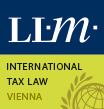Kasper Dziurdz
Kasper Dziurdź is Professor of International Tax Law at Maastricht University. After obtaining his Ph.D. at WU Vienna (Institute for Austrian and International Tax Law) in 2012, he conducted postdoctoral research at the same university which he completed with a Habilitation in 2018. He worked as a Senior Tax Manager and certified tax advisor with KPMG Austria until 2022, advising national and international clients in the matters of business and corporate tax law, including BEPS and the two-pillar solution. Dr. Dziurdź specializes in international and European tax law and in particular tax treaty law, but he has also conducted extensive research in income and corporate tax law, VAT and tax procedural law. In addition, for his Habilitation thesis on “Non-Discrimination in International Tax Law and World Trade Law”, he has gained extensive knowledge of WTO law and general concepts of non-discrimination.Courses:
Value Creation and Taxation
According to the OECD, Amount A of Pillar 1 aims at ensuring a fairer distribution of profits and taxing rights among countries with respect to the largest MNEs. What started as a project to address the tax challenges of the digital economy under BEPS Action 1, including the difficulty of determining the jurisdiction in which value creation occurs, has the potential to reshape the international tax system as we know it. While traditionally tax treaties allocate business profits based on the permanent establishment principle, focusing on the supply-side of value creation, Amount A would re-allocate some taxing rights over MNEs to the markets, regardless of whether the MNEs have a physical presence there. How would the rules of Amount A achieve that? What alternatives exist to Amount A and are those alternatives, particularly Article 12B of the UN Model and DSTs, better suited to ensure taxation where value is created? To what extent is value created in the markets without physical presence? What is the required nexus to the markets? Which practical challenges do these measures face? The aim of the course is to address those questions.
Back to list

